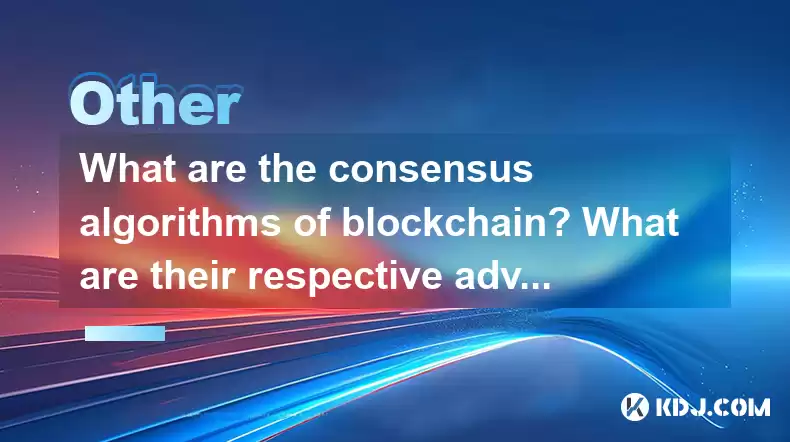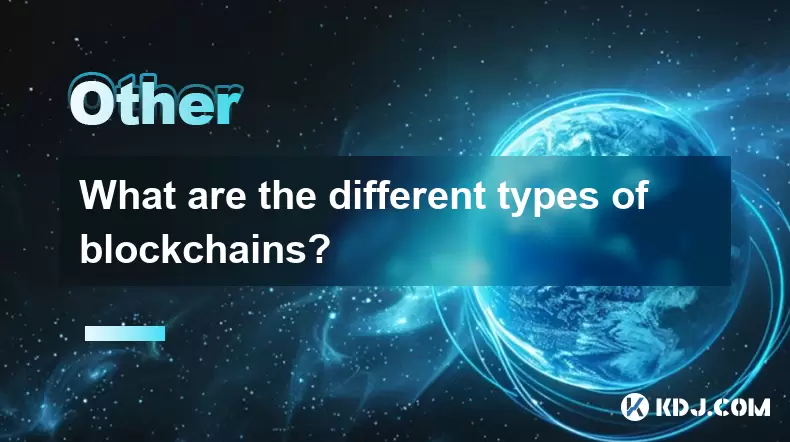-
 Bitcoin
Bitcoin $112400
-1.07% -
 Ethereum
Ethereum $3409
-3.27% -
 XRP
XRP $2.784
-6.60% -
 Tether USDt
Tether USDt $0.9997
-0.03% -
 BNB
BNB $739.3
-2.09% -
 Solana
Solana $158.0
-2.90% -
 USDC
USDC $0.9998
-0.02% -
 TRON
TRON $0.3213
-0.94% -
 Dogecoin
Dogecoin $0.1929
-5.01% -
 Cardano
Cardano $0.6974
-2.82% -
 Hyperliquid
Hyperliquid $36.69
-2.31% -
 Sui
Sui $3.327
-4.80% -
 Stellar
Stellar $0.3672
-5.18% -
 Chainlink
Chainlink $15.65
-3.07% -
 Bitcoin Cash
Bitcoin Cash $525.0
-1.68% -
 Hedera
Hedera $0.2291
-6.00% -
 Avalanche
Avalanche $20.91
-2.96% -
 Ethena USDe
Ethena USDe $1.000
0.00% -
 Toncoin
Toncoin $3.520
-1.12% -
 UNUS SED LEO
UNUS SED LEO $8.968
0.14% -
 Litecoin
Litecoin $105.7
0.26% -
 Shiba Inu
Shiba Inu $0.00001181
-1.79% -
 Polkadot
Polkadot $3.492
-2.08% -
 Uniswap
Uniswap $8.800
-3.10% -
 Dai
Dai $0.9999
-0.01% -
 Monero
Monero $289.9
-3.17% -
 Bitget Token
Bitget Token $4.243
-1.27% -
 Pepe
Pepe $0.00001006
-3.67% -
 Cronos
Cronos $0.1248
-5.68% -
 Aave
Aave $249.7
-2.50%
What are the consensus algorithms of blockchain? What are their respective advantages and disadvantages?
Blockchain uses various consensus algorithms like PoW, PoS, DPoS, PoA, and PBFT, each with unique advantages and disadvantages affecting security, energy use, and decentralization.
Apr 27, 2025 at 04:07 pm

Blockchain technology relies on consensus algorithms to ensure that all participants in the network agree on the state of the distributed ledger. These algorithms are crucial for maintaining the integrity and security of the blockchain. In this article, we will explore the various consensus algorithms used in blockchain, their advantages, and their disadvantages.
Proof of Work (PoW)
Proof of Work (PoW) is one of the earliest and most widely known consensus algorithms, famously used by Bitcoin. In PoW, miners compete to solve complex mathematical puzzles, and the first to solve the puzzle gets to add a new block to the blockchain and is rewarded with cryptocurrency.
Advantages of PoW:
- Security: PoW is highly secure because it requires significant computational power to launch a successful attack.
- Decentralization: It encourages a decentralized network, as anyone with the necessary hardware can participate in mining.
- Proven Track Record: PoW has been successfully used by Bitcoin for over a decade, proving its reliability.
Disadvantages of PoW:
- Energy Consumption: PoW requires a lot of energy due to the computational power needed to solve puzzles.
- Slow Transaction Speeds: The time it takes to mine a block can lead to slower transaction processing times.
- Centralization Risks: Over time, mining has become dominated by large mining pools, which can lead to centralization.
Proof of Stake (PoS)
Proof of Stake (PoS) is an alternative to PoW, where validators are chosen to create new blocks based on the number of coins they hold and are willing to "stake" as collateral. Ethereum is transitioning to a PoS system with Ethereum 2.0.
Advantages of PoS:
- Energy Efficiency: PoS consumes significantly less energy than PoW since it doesn't require solving complex puzzles.
- Faster Transaction Speeds: PoS can process transactions more quickly because it doesn't rely on mining.
- Reduced Centralization Risks: PoS can be more resistant to centralization, as it doesn't favor those with the most powerful hardware.
Disadvantages of PoS:
- Security Concerns: PoS may be vulnerable to certain types of attacks, such as the "nothing at stake" problem.
- Wealth Concentration: PoS can lead to wealth concentration, as those with more coins have a higher chance of being chosen to validate blocks.
- Initial Distribution: The initial distribution of coins can affect the fairness and decentralization of the network.
Delegated Proof of Stake (DPoS)
Delegated Proof of Stake (DPoS) is a variation of PoS where token holders vote for a small number of delegates who are responsible for validating transactions and creating new blocks. DPoS is used by blockchains like EOS and TRON.
Advantages of DPoS:
- Scalability: DPoS can process transactions at a higher rate than PoW and traditional PoS.
- Efficiency: It is more energy-efficient than PoW and can be faster than traditional PoS.
- Community Governance: DPoS allows for more direct community involvement in the governance of the blockchain.
Disadvantages of DPoS:
- Centralization Risks: DPoS can lead to centralization, as a small number of delegates control the network.
- Voting Manipulation: There is a risk of vote buying or other forms of manipulation in the delegate selection process.
- Security Concerns: The security of DPoS relies heavily on the integrity of the elected delegates.
Proof of Authority (PoA)
Proof of Authority (PoA) is a consensus algorithm where transactions and blocks are validated by approved accounts, known as validators. PoA is often used in private or consortium blockchains where trust is established among the participants.
Advantages of PoA:
- Speed and Efficiency: PoA can process transactions quickly and efficiently, making it suitable for enterprise use cases.
- Low Energy Consumption: It requires minimal energy compared to PoW, as it doesn't involve mining.
- Security: PoA can be secure if the validators are trustworthy and the network is well-governed.
Disadvantages of PoA:
- Centralization: PoA is inherently more centralized, as it relies on a limited number of validators.
- Trust Requirement: The security of the network depends on the trustworthiness of the validators, which can be a point of failure.
- Limited Decentralization: PoA is not suitable for public blockchains where decentralization is a key goal.
Practical Byzantine Fault Tolerance (PBFT)
Practical Byzantine Fault Tolerance (PBFT) is a consensus algorithm designed to tolerate up to one-third of the nodes being faulty or malicious. PBFT is used in some permissioned blockchains and distributed systems.
Advantages of PBFT:
- High Throughput: PBFT can achieve high transaction throughput, making it suitable for applications requiring fast processing.
- Finality: PBFT provides immediate finality, meaning transactions are confirmed as soon as they are included in a block.
- Security: It can tolerate Byzantine faults, ensuring the network remains operational even if some nodes are compromised.
Disadvantages of PBFT:
- Scalability Issues: PBFT becomes less efficient as the number of nodes increases, limiting its scalability.
- Centralization: Similar to PoA, PBFT can lead to centralization due to the need for a fixed set of validators.
- Complexity: Implementing and managing PBFT can be complex and resource-intensive.
Frequently Asked Questions
Q: Can a blockchain use multiple consensus algorithms?
A: Yes, some blockchains use hybrid models that combine different consensus algorithms to leverage their respective strengths. For example, a blockchain might use PoW for initial block creation and PoS for subsequent validation.
Q: How do consensus algorithms impact the security of a blockchain?
A: Consensus algorithms are critical for the security of a blockchain. They determine how nodes agree on the state of the ledger and prevent malicious actors from manipulating the network. The choice of algorithm can affect the resistance to attacks like 51% attacks or double-spending.
Q: Are there consensus algorithms suitable for both public and private blockchains?
A: Some consensus algorithms, like PoS and its variants, can be adapted for use in both public and private blockchains. However, algorithms like PoA and PBFT are more commonly used in private or consortium settings due to their centralized nature.
Q: How does the choice of consensus algorithm affect the energy consumption of a blockchain?
A: The choice of consensus algorithm significantly impacts energy consumption. PoW is notoriously energy-intensive due to the need for mining, while PoS and other non-mining algorithms are much more energy-efficient. This is a key consideration for environmentally conscious blockchain projects.
Disclaimer:info@kdj.com
The information provided is not trading advice. kdj.com does not assume any responsibility for any investments made based on the information provided in this article. Cryptocurrencies are highly volatile and it is highly recommended that you invest with caution after thorough research!
If you believe that the content used on this website infringes your copyright, please contact us immediately (info@kdj.com) and we will delete it promptly.
- BlockDAG, SEI, Ethena: Top Crypto Performers Under the Microscope
- 2025-08-03 10:50:16
- Bitcoin Blasts Past $119K: How Institutional Adoption and Macro Shifts Fuel the Fire
- 2025-08-03 10:55:16
- Crypto, Grok, and August: Decoding the Latest Trends and Insights
- 2025-08-03 11:10:16
- Crypto, Phishing, and Your Wallet: A New Yorker's Guide to Staying Safe
- 2025-08-03 10:30:16
- Troller Cat Meme Coin Presale Soars: A New King in the Crypto Jungle?
- 2025-08-03 10:30:16
- Grayscale, Altcoin Trust, and Mid-Cap Mania: What's the Deal?
- 2025-08-03 08:50:16
Related knowledge

What is the difference between on-chain and off-chain transactions?
Aug 02,2025 at 04:22pm
Understanding On-Chain TransactionsOn-chain transactions refer to digital asset transfers that are recorded directly on a blockchain ledger. These tra...

What is the double-spending problem and how does blockchain prevent it?
Aug 02,2025 at 01:07pm
Understanding the Double-Spending ProblemThe double-spending problem is a fundamental challenge in digital currency systems where the same digital tok...

What is the difference between a blockchain and a database?
Aug 01,2025 at 09:36pm
Understanding the Core Structure of a BlockchainA blockchain is a decentralized digital ledger that records data in a series of immutable blocks linke...

How does blockchain handle scalability?
Aug 02,2025 at 02:58pm
Understanding Blockchain Scalability ChallengesBlockchain scalability refers to a network's ability to handle an increasing volume of transactions wit...

What are the different types of blockchains?
Aug 03,2025 at 03:01am
Public Blockchains: Open and Decentralized NetworksPublic blockchains are the most widely recognized type of blockchain, characterized by their open a...

What is a hash in a blockchain?
Aug 02,2025 at 05:28am
Understanding the Concept of Hash in BlockchainA hash in the context of blockchain technology refers to a unique digital fingerprint generated by a cr...

What is the difference between on-chain and off-chain transactions?
Aug 02,2025 at 04:22pm
Understanding On-Chain TransactionsOn-chain transactions refer to digital asset transfers that are recorded directly on a blockchain ledger. These tra...

What is the double-spending problem and how does blockchain prevent it?
Aug 02,2025 at 01:07pm
Understanding the Double-Spending ProblemThe double-spending problem is a fundamental challenge in digital currency systems where the same digital tok...

What is the difference between a blockchain and a database?
Aug 01,2025 at 09:36pm
Understanding the Core Structure of a BlockchainA blockchain is a decentralized digital ledger that records data in a series of immutable blocks linke...

How does blockchain handle scalability?
Aug 02,2025 at 02:58pm
Understanding Blockchain Scalability ChallengesBlockchain scalability refers to a network's ability to handle an increasing volume of transactions wit...

What are the different types of blockchains?
Aug 03,2025 at 03:01am
Public Blockchains: Open and Decentralized NetworksPublic blockchains are the most widely recognized type of blockchain, characterized by their open a...

What is a hash in a blockchain?
Aug 02,2025 at 05:28am
Understanding the Concept of Hash in BlockchainA hash in the context of blockchain technology refers to a unique digital fingerprint generated by a cr...
See all articles

























































































